
Within the fabulous world of birds there are hundreds of species, but not all of them can be kept at home as a pet. However, one of the most loved is the parrot, a perfect pet to anyone.
Types of parrots
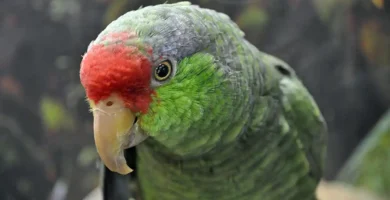
Red-crowned parrot
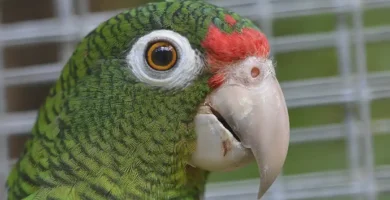
Puerto Rican amazon

Blue-fronted amazon
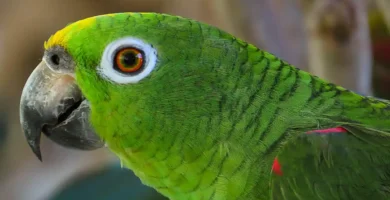
Yellow-crowned amazon
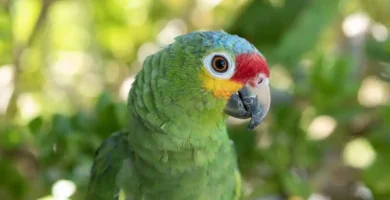
Red-lored amazon
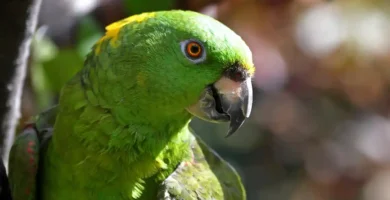
Yellow-naped amazon
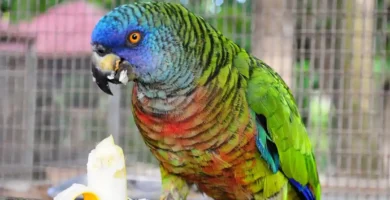
Saint Lucia Parrot

African grey parrot
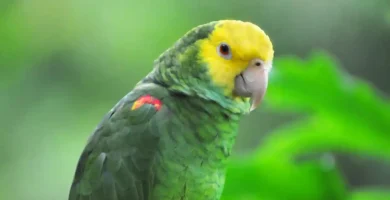
Yellow-headed amazon

Rainbow lorikeet

Saint Vincent amazon
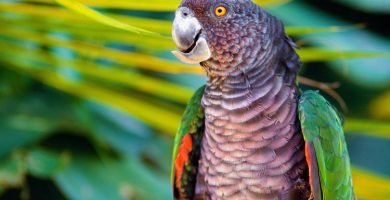
Sisserou parrot
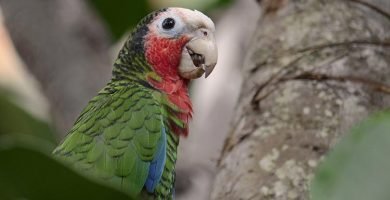
Cuban amazon
What is a parrot?
In the past all types of parrots were grouped into a single family, known as Psittacidae, but due to the huge variations that emerged over the years and the subfamilies, the name psittacoidea was left to the common parrot. These are spread over the different continents, each one with a characteristic that makes them unique.
The size of parrots is between 30 and 40 centimeters. They have a curved beak and a large cranial capacity, which makes them one of the most intelligent birds. The parrots are very good flyers and can grab the branches of the trees and climb them with great skill because of the claws of their legs.
The intense coloration of their feathers is another characteristic of the parrot. Their predominant color is green, but in some species they have other colors such as blue, red or yellow. Most species are monogamous, walking in tree cavities or as in tunnels dug by them.
Some parrot species can imitate a wide range of sounds, including the human voice, which has earned them a great reputation among bird lovers.
What is the life expectancy of a parrot?
Compared to other birds that live in captivity, parrots are actually animals that are quite long-lived. Although life expectancy depends on the species of parrot genus.
For example, a macaw parrot can reach 100 years of life if you take good care of it, although its average life expectancy is usually 80 years. Other parrots like the cockatoo, usually live between 20 and 60 years. Grey parrots and amazon parrots usually live around 50 years. Other ones like the Carolina conuros usually live about 30 years.
Although it’s a long life expectancy, 70% of the parrots don’t reach the maximum life expectancy, due to pollution in the cities, poor nutrition or accidents while walking around the house, such as biting a cable, banging on a window pane, among others.
Are parrots good pets?
Parrots have been pets for many years. But many people wonder if a parrot is better a better pet than any other animal. The answer is easy: YES.
For sure, parrots have their character and sometimes can be aggressive if they see it necessary. Besides, they may develop preferences for some people, which may represent a problem because they could behave in one way or another just to get people’s attention. If you have a parrot for the whole family, you have to be very careful that it only shows affection with one member of the family.
You should also notice that a parrot is not an animal intended for young children, as they don’t have sufficient knowledge and skills to care for it. The parrot must always be in the care of an adult who can meet its needs.
When it’s about a parrot: how to tell the gender of a bird?
When you have a parrot at home, it’s normal to want to know if it’s male or female, especially if you’re thinking about parrot breeding.
Females are normally a little more aggressive than males, so observing their behavior would be easy to distinguish. But if this is not enough, you can see the size and color of their feathers. When they are adults, the males are larger than the female, especially the head, in terms of colors, males have brighter and more colorful tones than females.
The simplest way would be through the parrot’s pelvis, since females have their pelvic bones further apart to lay their eggs.
Parrot cages: what to consider?
There are several things that you need to know regarding a parrot cage. Before choosing one, you should have a place to put it, get to know the best parrot cage size, how to clean a parrot cage, among others.
Where to put a parrot cage?
You have surely wondered: where is the best place to put a parrot cage? The truth is that before thinking of buying a parrot, you need to know if you have a suitable place in the house where to place a cage. Many novice owners make the mistake of putting their parrot’s cage in wrong places, and this is the reason why their pet live less time.
The first thing to consider is height. The cage should be located at about the same height as the owner’s eyes. What is the reason? If the cage is too high, your bird will look down when it communicates with you, which will make it believe it’s the “boss” in the house and will not tolerate being disturbed or punished when it does something that you don’t like. Instead, if it’s below your eyes, the parrot will understand that it’s the one dominated and it has to obey.
In case that the parrot is too aggressive or dominant, you can lower the cage to understand that it’s not in control. However, you should also be careful if you have other animals at home, as it’s a bird that gets scared easily. You should put the cage at a height where dogs or cats cannot reach.
The cage should also be located in a place where it receives the right amount of necessary sunlight. It’s not a good idea to directly exposed, except for one hour a day. It should also be a place where it doesn’t receive airstreams during the winter, as well as away from noise. Therefore, places such as balconies or kitchens are completely forbidden. The living room can be a good place, especially because they like to watch TV and can learn some words by watching the shows.
Besides, when parrots trust the family, they consider the human beings as a part of their flock. So we recommend you to locate the cage close to where most family members are during the day.
How to choose the perfect parrot cage?
Once you have a good place for your parrot cage, it’s time to buy it. It’s important that it’s big enough for the parrot.
If you’re going to buy a small parrot, a cage of 40 x 37 x 45 centimeters is a good choice for only one bird. Buy a cage of 60 x 42 x 50 centimeters if you’re going to have couple. For a medium-sized parrot, a cage of 70 x 60 x 80 centimeters will be enough, and a cage of 100 x 80 x 120 centimeters if there will be a second parrot. For a large parrot, the cage has to be 90 x 80 x 100 centimeters for one parrot, and 120 x 100 x 150 centimeters if you choose two parrots.
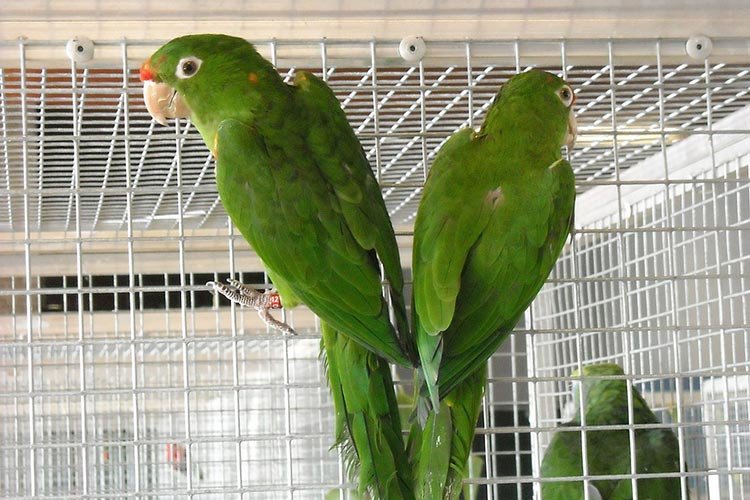
In terms of shape, it’s better to buy a rectangular cage. Many people think that a circular cage is the best choice for a parrot, but the truth is that they don’t like this type of cage at all, not even those with the shape of a little house because they cannot hold on to the bars. The bars should be no more than 1 – 2 centimeters far to each other in order to prevent them from sticking their heads in and getting stuck.
What does the parrot should to have in its cage? Although many cages include toys, it’s better to remove them all and install a couple of natural branches of trees so that the parrot can bit them or stand on them. Wooden toys help them to file their nails. From time to time you will have to change the toys so that the parrot doesn’t get bored.
How to clean a parrot cage?
After reading this, you will learn how to keep a parrot cage clean. At least twice a week, you should clean the floor of the cage and remove feces and leftover food. You should thoroughly clean it three times a month.
What should I use to clean my bird cage?
It’s a very common question that many owners have. Questions like: Can I use bleach to clean my bird cage? Or can you use vinegar to clean a bird cage? are usual too. From our perspective, these are the cleaning products you should use to clean a parrot cage:
- Bleach: One of the most common disinfectants, and one of the most effective to kill viruses, fungi and bacteria. It’s ideal for cleaning the floor of the cage to remove the feces. However, notice that when you mix it with water its disinfectant power is reduced up to 200 times. It’s better to apply it directly, let the cage dry for a few hours while the parrot moves around the house.
- Phenols: You may not use them much, but phenol-based disinfectants are also very good at killing bacteria. These products are especially good for cleaning the walls and floor of the cage.
- Ammonia: Another good product to kill viruses and bacteria that may be reproducing. Once you cleaned the cage, it’s when you need to apply it and then remove it with a little water and let the cage dry to make sure you removed all the bacteria.
- Formaldehyde: One of the best disinfectants available for cleaning parrot cages. However, to apply it, you have to do it in a well-ventilated room, with the parrot outside the cage. Once the cage is clean, allow it to dry for about two to three hours.
Tips to clean a parrot cage
You can follow these simple steps for proper disinfection:
- Clean and remove all the dirt from the cage, rinse it with clean water and then disinfect it with the product of your choice.
- Apply the disinfectant all over the cage to leave it clean of viruses and bacteria.
- The parrot must be outside the room where the cleaning is being done.
- The room in which it’s cleaned must be well ventilated and you should wear rubber gloves to avoid danger.
- After about 15 minutes after applying the disinfectant, rinse everything with water and let it dry before putting the parrot back inside.
How to make a parrot friendly
Once the parrot is at home, it’s normal if it feels a little intimidated. They are locked in a cage in an unfamiliar area and it may seem very fearful, which leads them to be aggressive.
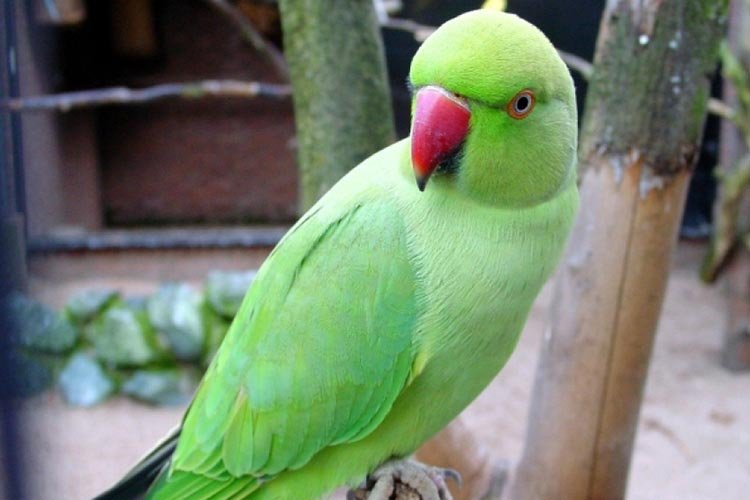
So, how to get a parrot to trust you? Follow these tips:
- Look away: When you look directly at a bird, it feels threatened. So when you’re going to make the first contact, look away when the bird is looking at you. Once the bird is staring at you, you should also make direct eye contact.
- Become a statue: Sometimes the parrot stands still when its owner is looking at it. In that case, you must not move and remain still, longer than the parrot.
- Blink: Parrots don’t blink when they’re scared. Therefore, the owner must send them messages to gain their trust. If the parrot is frightened when you look at it, you have to blink. If the parrot blinks again, it shows confidence.
Taking the bird outside the cage
Many owners raise their parrots freely around the house, and it’s not really dangerous. However, when it’s been in the cage for a while, it can be dangerous.
Before you can take the bird out of the cage, it must trust at least one of the family members. Along with body language, a way to gain their trust is to feed them by hand, like you feed a budgie and or as if you are feeding a lovebird. It may bite you at first, so you should wear gloves. In case of an attack, do not remove your hand, as this will make it feel in control. You also have to be careful, because it may learn to get out of the cage on its own.
Once you have its trust, the parrot will eat by the hand and even stand on your arm. Once it happens, you can take it out the cage or let it out by itself. At first, you should let it walk freely in the room where the cage is, with the windows closed, so that it can stretch its wings and get to know the place. Later on, you can let it explore the rest of the house. To take the parrot back to the cage, you can put its favorite food inside. When it gets hungry, it will get inside by itself
You should avoid feeding your parrot outside the cage, because it may not want to go back to the cage.
Most common parrot diseases
Like all other pets, the parrot is not free from disease. It is true that if you take good care of him, you don’t have to suffer from it, but you should never let your guard down. The most common are:
- Abnormal plumage molt: Parrots molt their plumage, but do not have a specific season to molt like other birds. It’s normal for feathers to fall on their own to make way for new ones, but you may find that it’s pulling its own feathers out, leaving parts of its body bare or wounded. If you notice this behavior, take it to the vet as soon as possible.
- Budgerigar Fledgling Disease Virus (BFDV): It’s a disease produced by a pathogenic agent called Polyomavirus. It’s transferred from parent to child through food regurgitation and sometimes leads to the death of the animal. The parrot loses its wing and tail feathers, it may have edema under the skin and abdominal distention.
- Pneumonia: If the cage is not properly located and often receives strong airstreams, it will end up suffering from pneumonia, which will lead to leggy eyes, nasal secretions and noisy breathing.
- Parasites: Just because the parrot is inside a cage does not mean that it’s free from parasites, both internal and external. The external ones can be the mites from the environment or even lice, which will cause restlessness and nervousness to the animal, with feathers falling and won’t stop scratching. In this case, they should be periodically get dewormed. If they’re internal, you should quickly take it to the vet to find out the right treatment to follow.
- Colibacillosis: It’s a disease produced by the bacterium Escherichia Coli, which is transmitted by direct contact with an infected bird. It’s the leading cause of death for these birds. Among the different symptoms, the parrot will be tired, despondent, lose its appetite and will be very restless. The sick animal must be isolated and maintain a thorough hygiene of its cage, cleaning the feeder and water dispenser daily. The parrot should also have antibiotics to fight infection.
- Coccidiosis: This disease is caused by an infestation of internal parasites known as coccidiosis. These can enter the pet’s body through ingestion of contaminated food or water. Among the different symptoms, the parrot will suffer from diarrhea, sometimes with blood, and will feel depressed and tired.
- Salmonellosis: It’s caused by the bacterium Salmonella Typhimutium, which enters the body through contaminated food or water. The bird will have inflammation, diarrhea with very bad odor and lesions on several of its organs. It’s necessary to go to the veterinarian quickly to prescribe the treatment for this disease.
How to feed a parrot
A parrot’s diet should be composed of vegetables and fruits as the main components along with some dry food.
You must give them fruits based on the sucrose and glucose content. You shouldn’t give them those rich in sucrose, such as bananas, peaches or melons more than two or three times a week. Be especially careful with bananas because they’re also rich in glucose. You also have to be careful with mangoes, cherries and grapes because of their glucose content. When you give it some fruit, try not to give it the same one for too long or it may end up hating it.
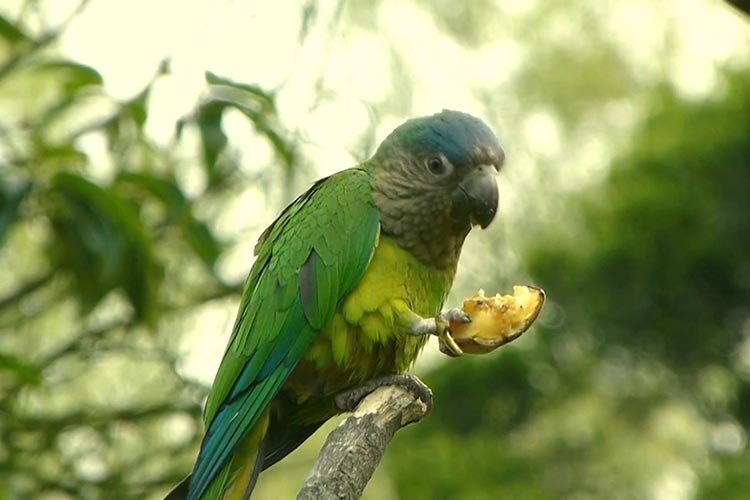
Vegetables are very important in a parrot’s diet. They can eat green vegetables like spinach, broccoli, chard or escarole. They may eats lettuce, but not often because it can cause diarrhea. If you choose roots, give them carrots or radishes. Other food that you can give them are artichoke flowers and cauliflower, tomato or red pepper.
Although fruit and vegetables are very good for the bird, it also has to eat dry food. You should choose a quality food, depending on the size and species of the parrot.
Besides, you can also give them small amount of legumes such as chickpeas or lentils and a mixture of seeds. Cereals such as rice or oat flakes, boiled potato, or homemade crackers that do not contain animal fat.
What are some foods that should not be fed to birds?
Some people feed their parrots with bread, pasta, strips of boiled chicken or fish, boiled eggs, among others. We recommend you to feed them as if they were in their natural environment. So try to avoid this kind of food for humans.
As you can see, a parrot eats almost everything. However, there are a number of foods that are totally forbidden for them. Things like sweets because of their high industrial sugar content, salted foods, coffee, parsley, milk, or unboiled pumpkin and potato.
Don’t feed avocados to parrots because it’s deadly for them. All of these foods should be out of the parrot’s reach when out of the cage.
How to breed parrots
Parrots have been living with humans for more than 15.000 years, being one of the oldest companion animals along with cats and dogs. Taking care of them can be easy, but what about raising them? You need an extra effort to get them to reproduce.
For parrots breeding it’s necessary to be more careful than other animals, taking into account some important factors. To start, at the time of reproduction the female and male should be calm and feel safe. If you have a cage with plenty of birds, it is better to move them to another module so that no one disturbs them. Besides, they must be well fed, so that the eggs receive the necessary nutrients.
The nest should be located in a high place. You can buy one in a specialized shop or give the parrots the necessary equipment to make it. Once they have it, the female will stand on the nest and may lay between 3 and 6 eggs. After an average of 23 days, sometimes 25, the brood is born without being able to fend for themselves. So you have to provide the parents with everything they need to take care of them.
When the brood is one month and a half old, it leaves the nest, and from two months on, it begins to become more independent. At this age, the parrot must be separated from its parents so that it can begin to fend for itself, so we recommend you to have a module in the cage for the young parrot.
How to train a parrot to talk
The reason why many people end up buying a parrot as a pet is because they like to hear it talk. Parrots have a great capacity to assimilate sounds and then repeat them. However, it’s not an easy task at all.
To start, you need to know that male parrots are better at talking than females, and their singing and vocalization skills are better. For males to learn to speak, it must be in perfect health and be a young specimen.
Are you ready to teach a parrot to talk? Well, to accomplish this task it has trust you first. You can achieve it by providing it a place to play and plenty of activities to do, while being in contact with you. But you have to be patient, as it may take a while to get in touch with its owner. If you try to get it out of the cage, which will help you to gain its trust, it may try to escape the first time. In this case, you should never try to capture it or yell at it to get it back in the cage. It’s better if you leave it alone, closing doors and windows, so that it can explore the environment. When the parrot gets tired, it will return to the cage.

Once you earned its trust, it’s time to start teaching the parrot to speak. The best time of day to speak a parrot to speak is in the morning or at dusk. The first words to teach are some easy ones to relate to an action, such as “delicious” when you give it some food, “I love you” when you caress his neck, or “good day” at dawn. To do this, you have to repeat the word along with the action so that it starts memorizing it. It can take a week or a month. For example, if you want it to say “delicious” after eating, while you give it its favorite fruit, you have to repeat “delicious” for about 5 or 10 minutes, and so on every day until the parrot repeats it.
If the parrot learns to speak easily, you can teach it more complicated words. You can start by the name of its favorite food or the name of one of the family members. Besides, it can be taught to obey an order, such as “get in” to stand on your hand or “go to sleep” when it’s time to go to bed so it can go back to its cage by itself.
It doesn’t look so hard, does it? However, there are parrots that never learn to speak, although they’re able to imitate some sounds. They usually imitate what they hear on the television, the doorbell or the telephone, even the whistle of a microwave or the singing of other birds. In these cases you can teach them a tune.
The most important thing for the parrot to learn is perseverance and not giving up on the first day. You have to work a little with it every day. Don’t forget to give it time to rest between lessons so that it doesn’t feel stressed.
